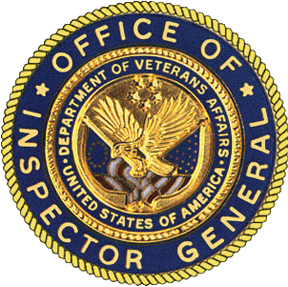VHA Should Improve Monitoring of Underground Storage Tanks to Minimize Environmental and Health Risks at VA Medical Facilities
Report Information
Summary
Underground storage tanks (USTs) are a critical part of the Veterans Health Administration’s healthcare facilities. The tanks store fuel for boilers and backup generators, which are essential to operations, especially during power failures. If the tanks are not properly installed and maintained, any chemicals they contain can be released into the environment, posing health and safety risks, such as cancer or adverse effects to reproductive, nervous, cardiovascular, and respiratory system health. The VA Office of Inspector General (OIG) conducted this audit to determine whether VA is managing USTs according to federally established regulations to prevent corrosion, spillage and overfill, and releases of substances into the environment.
The OIG reviewed 44 regulated VA-owned and -operated USTs at eight selected medical facilities and found that seven facilities, which had 42 of the 44 USTs reviewed, failed to comply with relevant VA and federal requirements from October 1, 2022, through September 2023. Although there were no instances of chemical releases from the reviewed USTs found during the audit, the OIG identified inaccurate records of USTs or related monitoring equipment, prolonged responses to and correction of automatic tank gauge alarms, and inconsistent reporting of regulatory inspections and results. By addressing these concerns with increased oversight, VA can reduce the risk of potential releases that pose significant environmental and health risks to veterans and employees at its medical facilities.
The OIG made seven recommendations, including to provide guidance on correctly and consistently recording UST assets, as well as to ensure the oversight requirements in VHA directives and federal, state, and local codes, laws, and regulations are followed.
As a part of the annual certification process of the Capital Asset Inventory, the executive director of the Office of Asset Enterprise Management should provide guidance on underground storage tank entries to ensure these assets are recorded with consistent identifying terminology in asset identification fields and with the appropriate real property predominant use code: code 40, “storage (other than buildings).”
Ensure Veterans Integrated Service Network officials fulfill their oversight responsibilities found in Veterans Health Administration Directive 1811 requiring VA medical facilities maintain a current inventory of underground storage tanks, inclusive of all associated equipment and component levels.
Ensure the assistant under secretary for health for support updates the responsibility section in Veterans Health Administration Directive 7707 to ensure that the responsibilities of VA medical facility directors include appropriate designation of staff and training for environmental regulatory requirements.
Ensure Veterans Integrated Service Networks are fulfilling responsibilities in Veterans Health Administration Directive 1811 to ensure facility compliance with federal, state, and local codes, laws, and regulations—including monitoring and addressing underground storage tank alarms promptly to confirm a release has not occurred.
Ensure Veterans Integrated Service Networks are fulfilling responsibilities in Veterans Health Administration Directive 1811 for work order (unplanned corrective maintenance) tracking from creation through completion in the approved maintenance management system—to include underground storage tank and associated component-level equipment failures or deficiencies identified in regulatory agencies’ inspections.
Confirm VA medical facility directors and Veterans Integrated Service Network directors are fulfilling responsibilities in Veterans Health Administration Directive 7707 to ensure regulatory compliance deficiencies are promptly reviewed, corrective actions are developed, and issues are tracked through completion to satisfactorily address environmental compliance.
Confirm VA medical facility directors and Veterans Integrated Service Network directors are fulfilling their oversight responsibilities found in Veterans Health Administration Directive 7707 to ensure all required federal, state, and local regulatory agencies’ inspections of underground storage tanks are recorded in the Veterans Health Administration issue brief tracking system.
